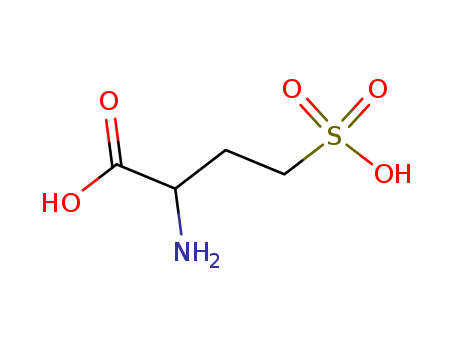- Chemical Name:DL-Homocysteic acid
- CAS No.:504-33-6
- Molecular Formula:C4H9NO5S
- Molecular Weight:183.185
- Hs Code.:2922499990
- European Community (EC) Number:207-991-0
- UNII:HYA2G5T79L
- DSSTox Substance ID:DTXSID00864543
- Nikkaji Number:J596.497K
- Wikipedia:Homocysteic_acid
- Wikidata:Q27162461
- Mol file:504-33-6.mol
Synonyms:(DL)-homocysteic acid;2-amino-4-sulfobutanoic acid;DL-homocysteate;DL-homocysteic acid;homocysteic acid;homocysteic acid, (D)-isomer;homocysteic acid, (DL)-isomer;homocysteic acid, (L)-isomer;homocysteic acid, monosodium salt;homocysteic acid, monosodium salt, (+-)-isomer;homocysteic acid, sodium salt, (+-)-isomer





